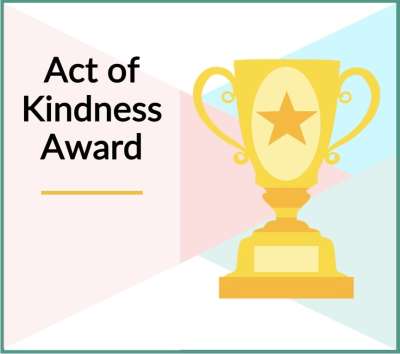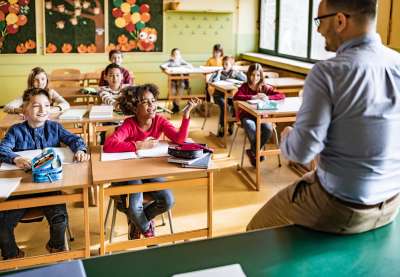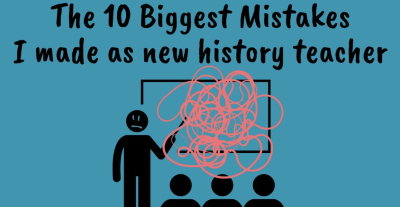Ashley Valentine is an experienced high school English teacher passionate about innovative and diverse teaching practices that fuel learning, engagement, collaboration, and fun. Here, she shares advice and ideas on getting the most of the space in your classroom.
Classroom Setup Ideas for the School Year
In 2015, I inherited a new classroom– it had great storage space, a beautiful view of a neighborhood street, and early morning sun pokes in through trees that trim the school’s property in utter majesty. However, at first, the classroom setup bore the vestiges of the esteemed colleagues who managed the space before me: old magazines, CD players, a teacher's desk drawer of files, a busted lectern, and a rickety shelf. But still, it had much potential.
For many years prior to 2015, I traveled from room to room as a part-time educator and I came to see the importance of maximizing classroom space. Here are some of my favorite classroom setup ideas for making a classroom design work more seamlessly for both students and teachers this school year:
Condense and Relocate
As an English teacher, every single book that is taught, or has been taught by teachers in my classroom, lives in my classroom space. Beyond counting your books, really consider where they should be stored depending on the frequency of use. Consider a classroom library or bookshelf. Once I took the time to condense and relocate items, I started to see that I had much more storage space than I initially thought.
Specialized Spaces
Two of my classroom cabinets have very specific roles: one is for costumes and props, and the other is for learning tools. When we complete play-based lesson plans, we have a wonderful selection of capes, crowns, necklaces, skulls, food props, and more. The cabinet’s intended use was for a teacher’s coat and personal belongings, but it was only becoming a messy place for me to dump things. Instead, I dedicated the cabinet to the trove of props I had acquired over years of teaching different activities. The cabinet was a great classroom setup idea because it provided us with more floor space while keeping all our props accessible. I’ve observed that students are not likely to spend a lot of time delicately hanging up props or lining up items on a shelf at the end of a lesson, especially if they’re in a younger grade level. It’s useful to opt for bins, baskets, and drawers that can be a little messy over a setup that depends on orderly placement.
Additionally, the second cabinet was transformed to house all of our classroom learning tools in one place. As the year progresses, it’s natural for classroom supplies to become scattered and sets to separate. To organize, first put everything into piles: all of the highlighters, magnetic implements, balls, counting chips, dry-erase markers– all of it! Review the amounts and diversity of tools, then group and bundle. Give yourself permission to purge broken or unwanted items and send emails to colleagues who might make use of certain supplies. After I did this with my tools, I utilized storage bins, drawers, and cases to store these items in the cabinet. Nothing was tucked or shoved and everything was front-facing. What was immediately transformative was how the view of my supplies stoked my creativity. By seeing what tools and implements I had, I could envision how I could use those items individually or in combination to make new lesson plans.
Since I am also an instructional coach, both cabinets became an important place where new teachers and their students could find supplies for their own classroom setup. It’s become an incredible resource for hands-on implementation and inspirational classroom management.
The Art of Labeling
You might be thinking: “Come on! Who has time for that?!” However, what I’ll tell you is that in order to facilitate student independence and classroom organization, labels can do wonders. Label creation does not have to be an expensive or time-consuming process. You can buy print peel-and-stick mailing labels from Amazon or Ikea and add them to whatever it is that needs labeling. While this may seem like an added chore, remember that directing learners to what they need can save the teacher time and increase student independence. In my own classroom, students return to the resource closet over and over again. They know where to go to get what they need. Because the classroom setup isn’t overwhelming or cluttered, it’s easy for students to return items to their dedicated homes, whether it be the whiteboard, bookshelf, or student desks.
Maintenance
I try to dedicate five minutes to the task of tidying every few days. I usually do this during a prep period when I just can't stand to lesson plan or grade student work. I find that my students also appreciate and respond better to a space that is neat. Students sometimes say, “It’s so clean in here,” or “I love how bright it is.” For me, it’s also a quick way to engage in mindfulness.
Project Storage
If your learning space is used to store or maintain bulky in-progress or completed projects, consider a digital archive to declutter your classroom layout. Take photos of the projects and keep only what can be used as decor or student samples. This way, the learning environment is less cluttered. Be selective; remember, in a sea of crowded shelves, your current students won’t draw inspiration from the incredible past projects you’re keeping. Don’t forget that some of your colleagues may have a purpose for student projects as well. One year I scooped up a ceramic slice of pizza from an art classroom and I’ve had it ever since. I love that little pizza slice!
Classroom Decor
If you have bulletin boards in your classroom and you don't have the time, energy, or resources to re-decorate them every single year or unit, choose a look or display that's simple but meaningful. I used to change the images on my bulletin boards for every book that I taught each term. I included DIY fan art, and pictures, and even printed out essential questions. They were beautiful! However, I started opting for minimalist over maximalist decor ideas, and now the boards have a simple classroom theme that looks great all year.
Every teacher has a different teaching style and level of energy to put toward these endeavors. If you’re reading this from the perspective of an administrator or teacher advocate, know that the creation and maintenance of beautiful and functioning classrooms are stimulated through time and financing. Providing educators with these resources can enable teachers and students to enjoy spaces that stimulate peace and productivity in the new school year.















